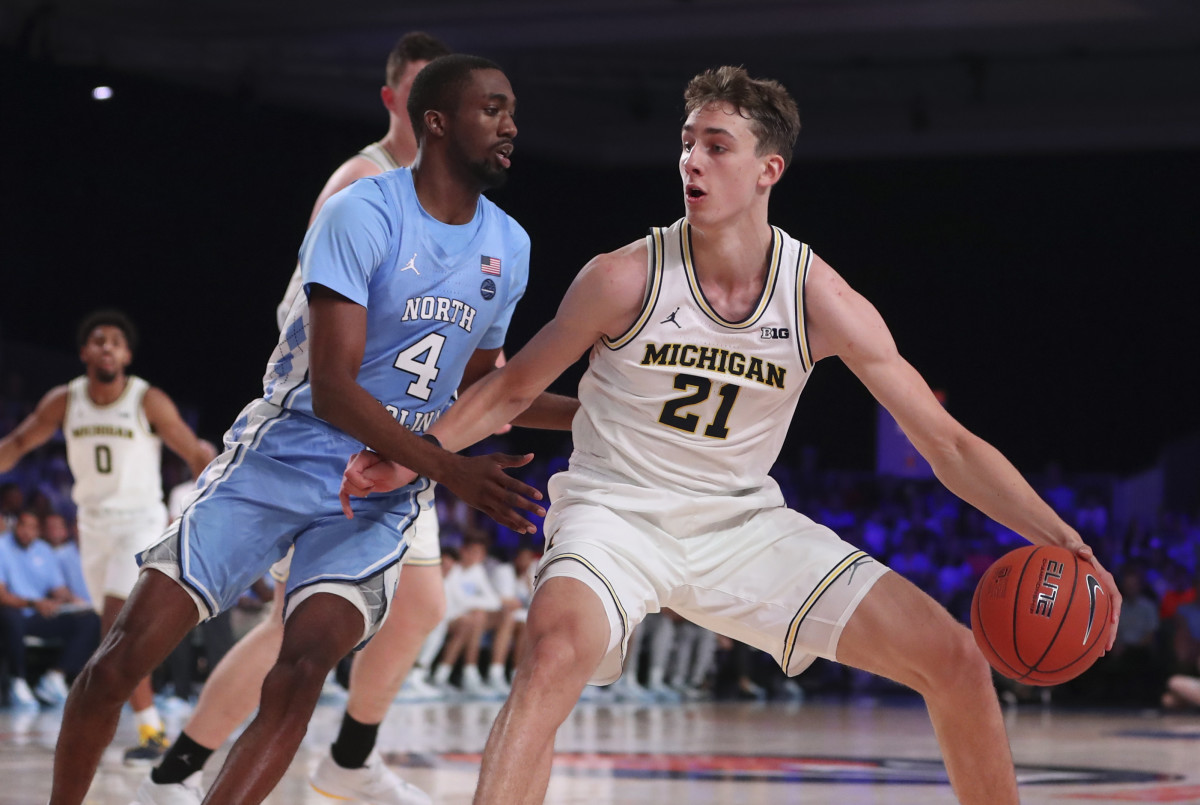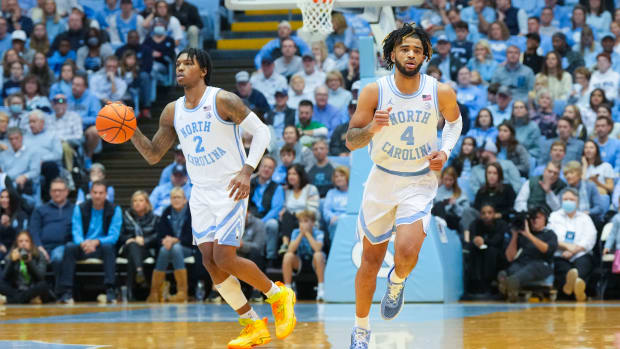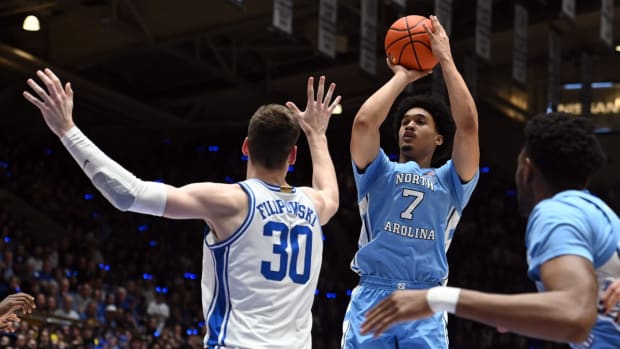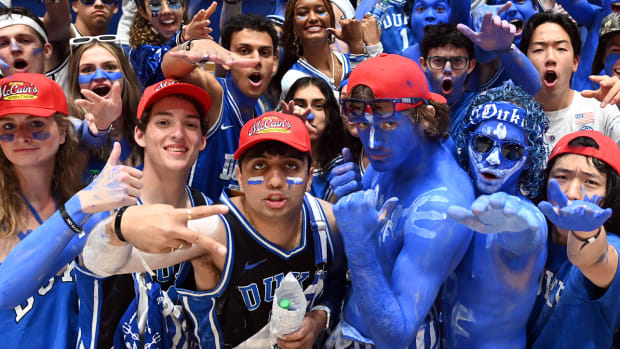Five Things to Watch as UNC Looks to Bounce Back vs. Oregon

Less than 24 hours after suffering its first loss of the season, North Carolina returns to action vs. No. 11 Oregon on Friday morning (11:30 a.m./ESPN).
Here’s what to watch for as the Tar Heels (5-1) meet the Ducks (6-1):
How’s the Energy?
Fast starts haven’t exactly been Carolina’s thing this season, but if there’s ever a time for the Tar Heels to come out with their hair on fire, this is it.
For all that went wrong vs. Michigan, the 24-point deficit forced Carolina to start playing with a sense of urgency unlike we’ve seen all season, keying a rally that shaved 16 points off the Wolverines’ lead. It was too little, too late, but if the Tar Heels play with that much energy for 40 minutes, they’ll win a ton of games.
The first sign that the loss was handled correctly will be whether they pick up where they left off in the final 10 minutes on Thursday.
Slump or trend?
A few games is a slump, but six games is a trend.
This isn’t a good shooting team right now, as Carolina ranks 219th nationally in 3-point percentage (31.2), 236th 2-point percentage. (46.6) and 321st in free throw percentage (60.3).
What’s that mean? The Tar Heels aren’t getting enough good shots or easy buckets at the moment.
Those numbers are too bad to believe that they won’t improve significantly over the next month, but that starts with getting better opportunities.
Where does that begin? Well…
Defensive Identity
Carolina has been at its absolute best in recent years when the defense is playing at a high level.
Oregon is the best offensive team the Tar Heels will have played this season, with dynamic point guard Payton Pritchard (18.8 points, 5.7 assists) leading an attack that shoots well from 3-point range and does a good job of protecting the ball.
Carolina has to take this game as a personal challenge, looking to generate more live-ball turnovers than it has forced this season, ranking 280 nationally in steal percentage.
Defensive pressure is fuel for the fire that the Tar Heels need to get started in transition, where it can help its offense with easy baskets and creating mismatches on the secondary break.
With the current state of the offense, winning games is up to the defense.
Transfer Troubles
Christian Keeling and Justin Pierce are still getting up to speed, but the Tar Heels have to find a way to get a little more out of two seniors than the four points, three rebounds and one assist they combined for in 33 minutes on Thursday.
Keeling has had some nice moments this season when he’s had an opportunity to put the ball on the floor, penetrate and try to make a play. It’s pretty clear that he’s more comfortable as a creator than a catch-and-shoot guy on the wing.
Pierce, meanwhile, has the skill and athleticism to be a big-time rebounder for the Tar Heels. In the victory at UNC Wilmington, he said that his focus was on rebounding and defending and letting his offense come to him, and thanks to that hustle, he ended up with 18 points.
Even when their shots aren’t falling, the grad transfers have the ability to affect the games in other ways. It can’t just be scoring or nothing at all.
Pound the Boards
Control the boards, control the tempo and control the game.
Oregon isn’t not a particularly good rebounding team, and after a fairly even matchup against Michigan, the Tar Heels should be locked in a dominant performance similar to the 60-31 edge vs. Alabama.
The Ducks, who rank 276 nationally in defensive rebounding rate, will give the Tar Heels second chances, and what better way to find a few easy buckets than having Garrison Brooks and Armando Bacot catching the ball deep in the paint?
As good as the bigs were on the boards against Alabama, the guards made the difference as Cole Anthony, Brandon Robinson and Leaky Black combined for 22. Against Michigan, that trio had just 11 — half the opportunities to catch and go on offense.






